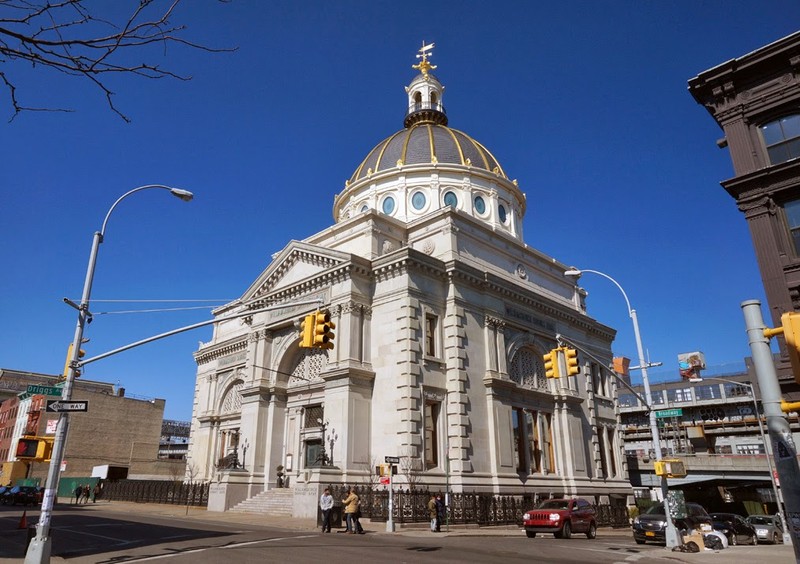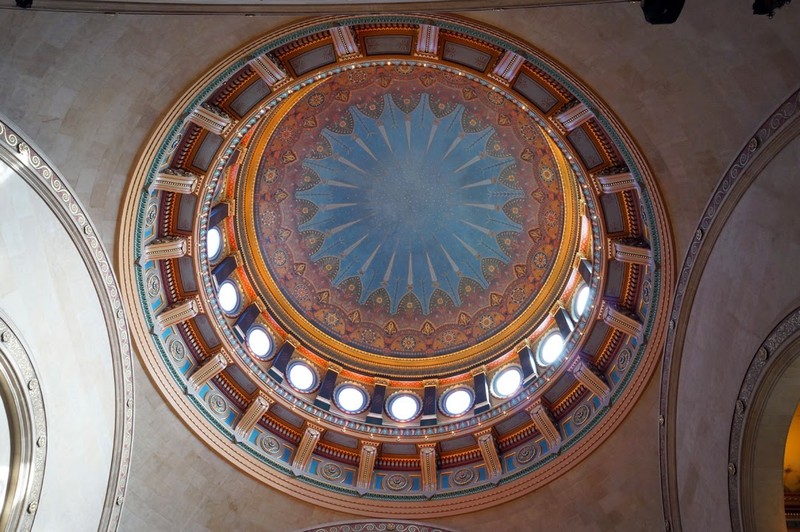Williamsburgh Savings Bank
Introduction
Text-to-speech Audio
Images
Williamsburgh Savings Bank

The interior of the building's dome

Backstory and Context
Text-to-speech Audio
One of the most striking architectural landmarks in Brooklyn was almost allowed to be destroyed by time and the elements. The Williamsburgh Savings Bank, which was completed in 1875 after five years of construction, The building featured hand cut mosaic tiles in the floor and walnut and mahogany woodwork throughout. Doorknobs and fixtures were custom made to feature the initials "WSB." The building, with its striking dome, instantly became a Brooklyn landmark.
Not only was the building one of the city's most easily recognizable structures, the bank was also highly successful. By the mid-1920s, it was the largest mutual savings bank in Brooklyn and the fourth largest in the United States. The bank regularly received deposits from account holders in countries around the world. For much of the twentieth century, the bank was an integral part of Brooklyn's economy.
But as the city's economy declined, so did the bank's. By the late twentieth century, a series of mergers brought the bank into the HSBC group. HSBC sold the property in 2010 for $4.5 million. The buyer was Juan Figueroa, the owner of a Williamsburg hostel. Figueroa spent two years renovating the building, the most extensive work done on the building since its construction. The once grand building was in a state of decrepitude when Figueroa began its renovation.
As part of the restoration, years of paint were stripped from woodwork. The marble tiles for the floor were ordered from the same English company which made the originals and still had the molds and the exact colors. The "WSB" doorknobs were replicated throughout the building, and the lavish murals on the dome's interior were restored. The restoration was exacting enough that the New York Landmarks Conservancy awarded it the Lucy G. Moses Preservation Award. The lavishly restored building is now an event space, known as Weylin B. Seymour's, a nod to the initials found throughout the building.
The Williamsburgh Savings Bank building is a New York City Landmark and was added to the National Register of Historic Places in 1980.
Sources
Dunlap, David. A Landmark Restored, From Mosaic Marble Floor to Grand Dome, New York Times . March 12th 2014. Accessed August 24th 2019. https://www.nytimes.com/2014/03/13/nyregion/a-landmark-restored-from-mosaic-marble-floor-to-grand-dome.html.
. NYC Architecture . Accessed August 24th 2019. http://www.nyc-architecture.com/WBG/wbg020.htm.
